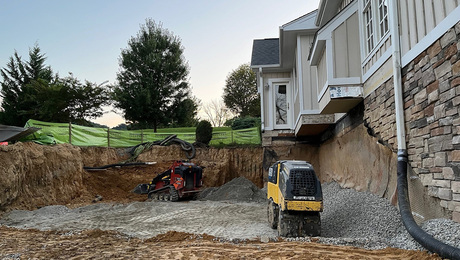Hideaway Baking Center
An overhead door conceals a workcenter in a kitchen for two cooks
Designing this kitchen was particularly challenging because the homeowners are both passionate cooks and often find themselves working in the kitchen at the same time. We agreed that a two-cook kitchen calls for two work areas. The idea of dedicating one of the workstations as a baking center was a hit with the homeowners even before I knew how it would fit into the kitchen and what I could do to make it look good.


During the first day on the job, a lucky thing happened. When we opened the 7-ft. kitchen ceilings, we found that the attic space above the kitchen was empty. Along with the surprise came inspiration, and it wasn’t long before I conceived the idea for an overhead door to hide the baking center. The door works much like a garage door and even uses some of the same hardware, including a torsion bar that acts as the lift mechanism and metal stabilizers that are hidden on the back of the door.
The door is designed to look like a shoji screen, which traditionally has rice-paper panels. In this case, for durability and easy cleaning, I used a piece of fogged fiberglass instead of rice paper. A ranma borders the bottom of the screen. Ranmas are carvings commonly used in Japan to decorate transom windows. On the baking-center door, the ranma is decorative but also functions as a handle.
Garage-door technology

Randy Northern is a general contractor in Visalia, Calif.
Photos: Randy Northern; Drawing: Chuck Lockhart
























